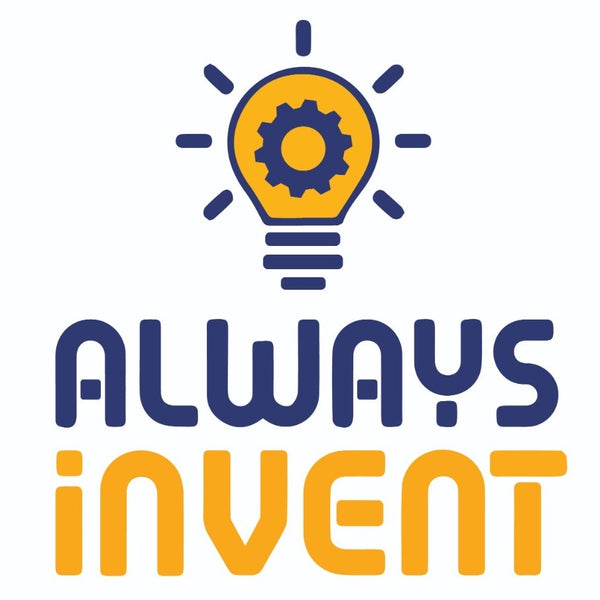
How Schools Can Fuel a Culture of Innovation Through Invention Learning
Introduction: Why Innovation Begins in the Classroom
Schools are more than centers of academic instruction—they’re the birthplace of tomorrow’s thinkers, leaders, and change-makers. As the world demands creative problem-solvers and agile minds, invention education for students has become a powerful pathway to cultivate real-world skills.
This blog will explore how schools and educators can foster innovation through invention learning. From redefining classroom roles to integrating hands-on projects, this guide offers both practical strategies and a philosophical foundation to inspire the next generation of inventors.
1. Understanding Invention Education for Students
What is Invention Education?
Invention education is a student-centered approach where learners identify real-world problems and create innovative solutions. It blends creativity, curiosity, critical thinking, and hands-on experimentation.
Unlike traditional methods, invention education:
-
Encourages risk-taking and failure as part of the process.
-
Promotes open-ended exploration.
- Shifts focus from grades to genuine impact and curiosity.
How does it differ from STEM or Robotics?
While invention education may incorporate science or technology, it goes beyond:
-
STEM focuses on subject mastery.
-
Robotics emphasizes technical skills.
- Invention education builds creators who empathize, design, and test real solutions.
Related: Why Invention-Based Learning Works Better Than Textbooks

2. Why Schools Should Adopt Invention Learning
Empowering the Whole Child
Invention learning nurtures not just intellectual but also emotional and social development. It:
-
Boosts student confidence.
-
Builds teamwork and communication skills.
- Encourages empathy-driven innovation.
Solving Real Problems
From redesigning lunch trays to inventing eco-friendly schoolbags, invention education makes learning purposeful. Students solve real problems, not just answer test questions.
Alignment with NEP 2020 and Global Trends
India’s National Education Policy (NEP 2020) encourages:
-
Experiential learning
-
21st-century skills
- Entrepreneurship
Invention education aligns with these goals while also resonating with global education models like Project-Based Learning (PBL) and Design Thinking.
3. The Core Pillars of Invention Learning in Schools
A. Curiosity-Driven Learning
Children naturally ask, "Why?" and "What if?" Invention learning fuels that curiosity with:
-
Open-ended questions
-
Freedom to explore without immediate answers
- Real-life challenges that ignite interest
B. Empathy & Observation
Innovation begins with understanding the needs of others. Teach students to:
-
Conduct interviews
-
Identify pain points in their surroundings.
- Observe people and processes critically.
Tip for Teachers: Use tools like Stanford d.school’s Design Thinking Playbook to guide observation exercises.
C. Ideation and Brainstorming
After observing problems:
-
Facilitate brainstorming sessions
-
Encourage “wild” ideas.
- Introduce mind maps, sticky notes, and collaborative idea boards
D. Prototyping & Testing
Move ideas into action:
-
Use cardboard, recyclables, or digital tools
-
Test prototypes with peers or the local community
- Embrace failure as a learning milestone
E. Reflection and Improvement
Help students:
-
Evaluate what worked and didn’t
-
Adjust designs
- Celebrate iterative progress

4. Practical Steps for Schools to Introduce Invention Education
Step 1: Train the Teachers
Teacher readiness is the cornerstone of invention learning. Conduct professional development programs that cover:
-
Design thinking
-
Project facilitation
- Student-led learning strategies
Resource: www.alwaysinvent.com
Step 2: Create Maker-Friendly Spaces
No need for high-tech labs! Start with:
-
Flexible seating
-
Basic tools and materials
- Safe zones for experimentation and mess
Step 3: Integrate with Existing Curriculum
Don’t treat invention education as “extra.” Integrate it with:
-
Science (energy-saving devices)
-
Social Studies (community-based inventions)
- Language Arts (writing product pitches or documentation)
Step 4: Launch Mini-Innovation Challenges
Use 1-week or 1-month invention challenges like:
-
"Redesign the classroom experience"
-
"Solve a problem in your neighborhood."
- "Invent a zero-waste lunch kit."
Step 5: Celebrate Student Inventors
Recognize achievements through:
-
School-wide showcases
-
Parent exhibitions
- Collaboration with local innovation hubs or NGOs
5. Sample Invention Projects for Different Age Groups
|
Age Group |
Sample Invention Idea |
|
12–14 Years |
A backpack with a built-in umbrella |
|
15–17 Years |
A pencil that detects grip pressure |
|
18–20 |
An app to track emotional well-being |
|
20+ Years |
A low-cost cooling device for farmers |
📌 Bonus: All these ideas are explored in our guide: 5 Amazing Invention Ideas for Kids

6. Challenges Schools Might Face—and How to Overcome Them
Limited Budget
Solution: Start small. Use recycled materials. Seek crowdfunding or CSR partnerships.
Time Constraints
Solution: Integrate invention time into core subjects or club periods.
Resistance to Change
Solution: Share success stories from pilot programs or invite guest speakers who embody innovation in education.
7. Global Examples of Invention Learning in Action
United States: The Invention Convention
A nationwide initiative where students showcase original inventions, many of which have been patented or brought to market.
India: Atal Tinkering Labs
Backed by NITI Aayog, these labs foster innovation in thousands of schools. Their success highlights how invention education can scale.
Finland: Phenomenon-Based Learning
Finnish schools use real-world phenomena to drive student curiosity—essentially, invention education in disguise.

8. Always Invent: Bringing Invention Learning to Every School
At Always Invent, we’re pioneering the world’s first structured Invention Learning Program for students aged 12 and above.
Our 3-tier model includes:
-
Curious Inventors (Grades 4–6) – Introduction to invention thinking.
-
Genius Inventors (Grades 7–12) – Real-world invention challenges.
- Innovation Trailblazers (College Students) – Advanced prototyping and pitching.
We offer:
-
Online workshops
-
Monthly mentorship and live Q&A
-
No extra coaching fees after 10 months
- Group discounts and interactive sessions
🌐 Explore the Program: Always Invent Invention Learning Program
9. How Schools Can Collaborate with Us
We’re inviting schools to:
-
Implement Invention Learning as a core module
-
Participate in the 1 Million Young Inventors mission.
- Align with Startup India, NEP 2020, and Digital India
Email us at: invent@alwaysinvent.com
Or call us: +91-98987 44337
10. The Future of Invention Education
The shift is already happening. Countries, companies, and classrooms are rethinking education not as rote learning, but as a lab for innovation.
Schools that embrace invention education will:
-
Future-proof their students
-
Build community leaders
- Create changemakers, not just job-seekers
Conclusion: Innovation is No Longer Optional
To prepare students for a world that doesn’t exist yet, we need to teach them to create that world.
Invention education offers a compelling, practical, and joyful way to nurture innovation, empathy, and problem-solving in every classroom.
So let’s start now—one idea, one school, one child at a time.
